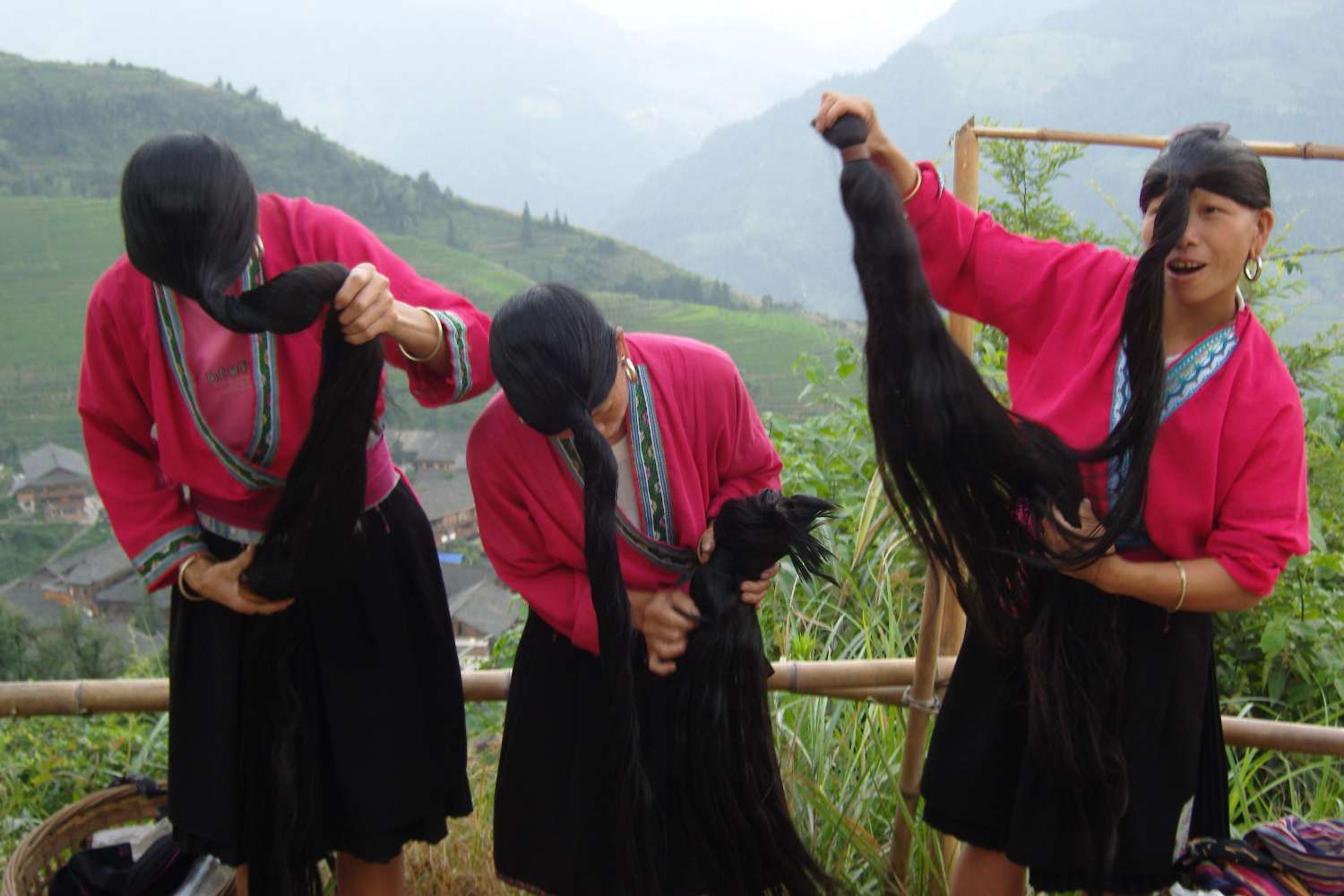In the Chinese village of Huangluo, Red Yao women cut their hair only twice in their lifetime: at about 100 days after birth and at the age of 18. A tradition that today attracts tourists from around the world

SAMSUNG DIGITAL CAMERA
Table of contents
In the mountains of Guangxi Zhuang, in southern China, lives the Red Yao ethnic group, known for the extraordinarily long hair of its women. They maintain the tradition of cutting their hair only twice in their lifetime: once at about 100 days after birth and then at the age of 18. Thanks to this practice, many elderly women display locks that exceed five feet in length, with some even reaching six and a half feet.

@Wikimedia
A cultural and symbolic meaning
The choice not to cut hair frequently has deep roots in the history of the Red Yao people, dating back to the Song Dynasty, about a thousand years ago. Long hair symbolizes longevity, beauty, and wealth. The women wear traditional vermilion garments and black skirts, and their hairstyle varies based on marital status: married women with children often wear part of their hair in a bun on their forehead, while unmarried women hide it under a black cloth, visible only to their future husband.
The secrets to caring for their hair: almost no gray hair
The hair of the Red Yao women is not only long, but almost never shows gray hair. This is thanks to a handmade shampoo, made with rice water and local herbs, which can also be ingested and has a sweet and slightly sour taste. The inhabitants of Huangluo village explain that the combination of pure water, favorable climate, and natural ingredients contributes to the luxuriant growth of their hair, keeping it strong and shiny.

@Gerd Eichmann/Wikipedia
A village turned tourist destination
Until the 1980s, Huangluo was isolated from the outside world. Today, thanks to its unique tradition, the village has become a tourist attraction. Visitors can witness traditional dances, singing performances, and hair care rituals, connecting with an ancient culture that has remained almost intact. The women themselves emphasize how the knowledge passed down from their ancestors is still effective: their handmade shampoo contains proteins and yeasts, which contribute to hair health.
For the Red Yao people, hair is not just an aesthetic ornament, but a symbol of identity and history. Their long locks represent the connection with their roots, the pride of an ancient people, and the resilience of a community that has transformed its traditions into a cultural and tourist resource.
Source: South China Morning Post
